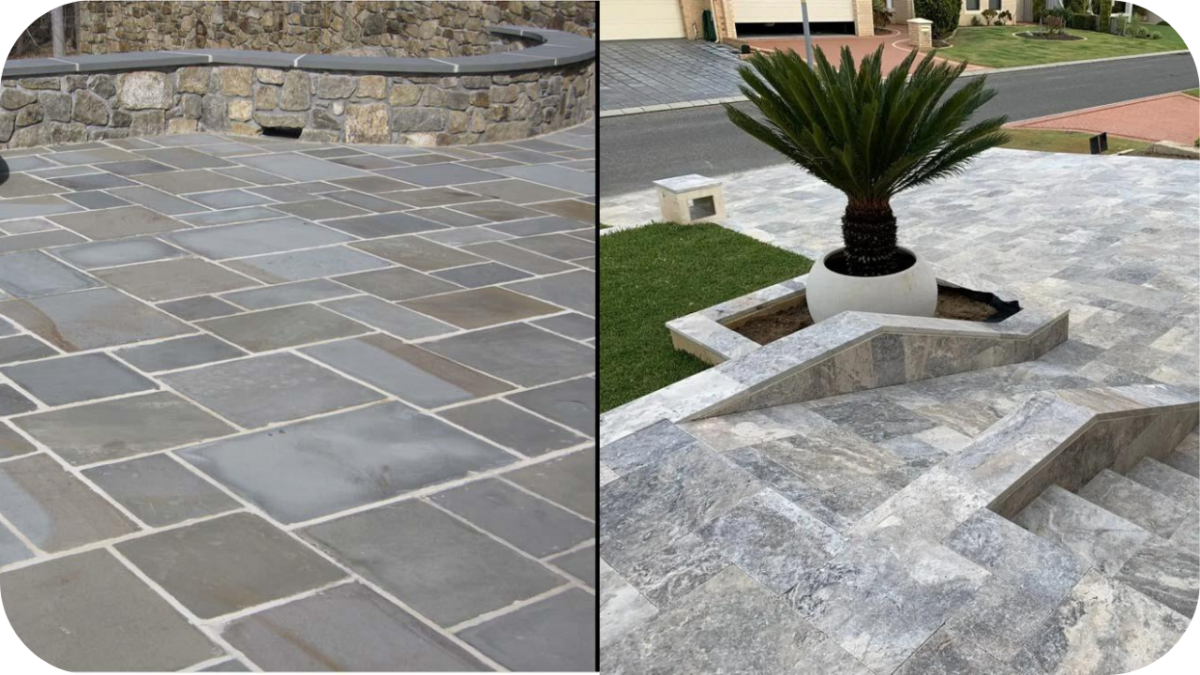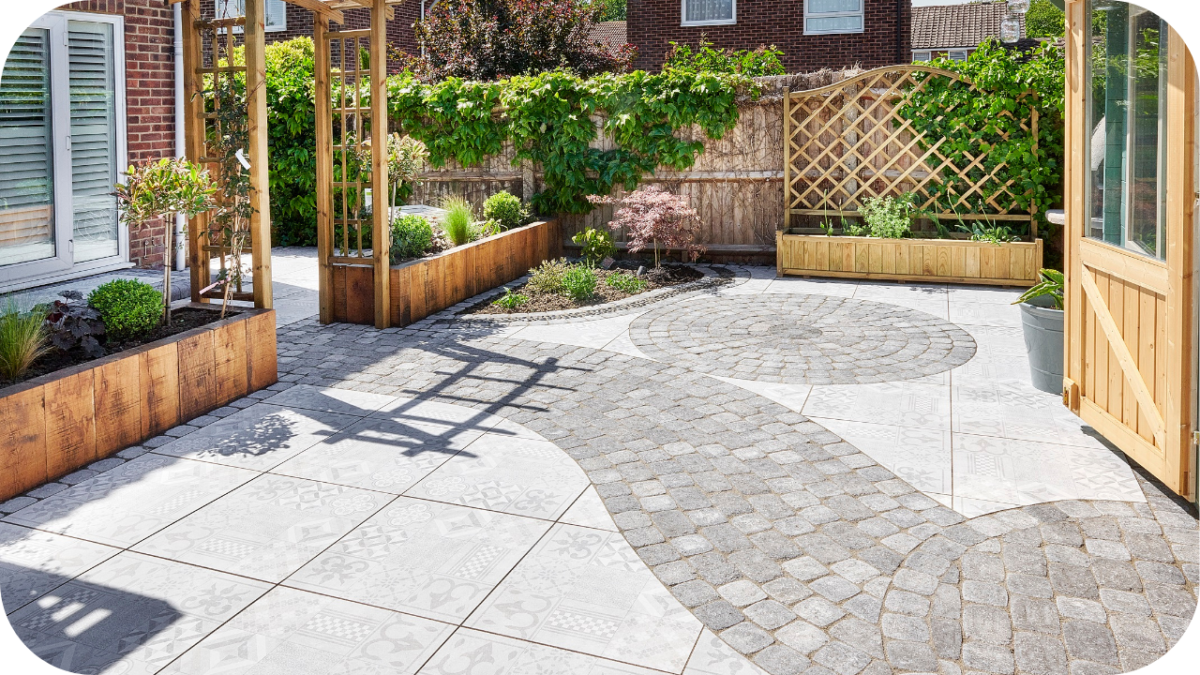2025 Stone Paving Trends for Aussie Backyards
After the shift toward home-based living that surged post-2020, Aussies continue to reimagine their outdoor spaces.
Backyards have become personal retreats, entertainment zones, and places of real connection. In 2025, paving trends are responding with a perfect mix of natural beauty, practicality, and innovation.
From tonal palettes that harmonise with native flora to paving systems designed for smarter drainage, the design language is evolving. So, what’s defining Australia’s most stylish, functional, and forward-thinking backyard pavers this year? Let’s dive in!
1. Natural Textures and Earthy Tones
There’s a noticeable return to grounded aesthetics, with homeowners choosing pavers that reflect Australia’s natural landscapes. Earthy tones like soft creams, warm beiges, and gentle greys are dominating the scene, providing a calming backdrop to minimalist outdoor settings.
Instead of glossy finishes, matte and lightly brushed surfaces are being favoured for their organic look and feel. Limestone, travertine, and granite continue to lead the charge here, offering timeless appeal and versatility.
These finishes work beautifully alongside native plants and raw timber furniture, grounding your outdoor design in authenticity. The overall effect is warm, inviting, and completely in tune with nature’s quiet elegance.
2. Large Format and Oversized Pavers
Bigger is better in 2025 when it comes to backyard paving. Oversized pavers offer sleek lines and minimal joints, creating a more spacious, streamlined appearance.
They lend themselves to contemporary designs that focus on flow and cohesion. Bluestone, honed limestone, and granite are top picks in this trend, providing both durability and architectural appeal.
Whether you’re designing a poolside area, patio, or an open-air lounge, large-format paving achieves a clean and modern look with less visual clutter. The reduced grout lines make maintenance easier, too, enhancing their appeal for practical homeowners who want low-effort elegance.
3. Crazy Paving Revival
This nostalgic favourite is back in a bold way, transforming eclectic backyard corners into works of art. Crazy paving, known for its irregular stone layouts, adds a handcrafted, relaxed charm that’s hard to replicate.
No two applications ever look the same, giving each space a unique visual signature. It’s particularly popular in garden paths, around firepits, or as a breakaway patio design. Materials like sandstone, quartzite, and porphyry are popular choices for their texture and colour variation.
The charm lies in the imperfect, natural feel that crazy paving brings, perfectly suited for free-flowing landscapes and bohemian outdoor styles.
4. Seamless Indoor-Outdoor Transitions
Designers are increasingly blurring the line between inside and outside, and paving plays a central role in this shift.
Homeowners want flooring that continues seamlessly from interior living areas to alfresco patios, allowing for an open, cohesive experience. Honed travertine, sawn bluestone, and lightly polished marble are frequently chosen for these applications due to their consistent tones and refined finishes.
The effect is stylish and highly functional, especially with sliding or bifold doors. This approach also makes smaller homes feel more expansive, as visual continuity creates an uninterrupted sense of space. A seamless transition adds sophistication and modern flow to any home.
5. Mixed Materials and Contrasting Edging
Blending different materials is gaining traction as a creative way to break up large spaces or define functional zones. Combining stone pavers with pebbles, timber, or exposed concrete introduces contrast in both texture and colour.
Edging techniques like bullnose, pencil round, or drop-face details further enhance the effect, creating clean boundaries that also feel intentional. This mix-and-match approach works well for entertaining spaces where different materials signal dining, lounging, or walkways.
It’s also an opportunity to personalise your layout with finishes and colours that reflect your own design taste. Mixing materials offers design freedom without sacrificing cohesion.
6. Eco-Friendly and Sustainable Stone Choices
Sustainability continues to shape how Australians design their homes, and paving is no exception. In 2025, there’s growing demand for eco-conscious paving options, from reclaimed bricks to locally quarried stone that reduces transport emissions.
Choosing durable materials that last for decades also reduces environmental impact. Many homeowners are opting for permeable laying methods to support better water flow and reduce runoff. Finishes that don’t require harsh chemical sealants are also gaining favour.
Whether it’s through recycled content or smarter sourcing, sustainable stone paving allows you to make a long-lasting visual statement while still treading lightly on the planet.
7. Low-Maintenance Finishes for Busy Homeowners
Not everyone has time for intensive upkeep, which is why easy-care finishes are dominating backyard projects in 2025.
Tumbled and brushed stones are leading the charge thanks to their ability to hide minor wear and weathering. These finishes not only offer aesthetic appeal but also practicality, especially when sealed to resist stains, moisture, and salt damage.
Travertine, granite, and marble are popular for their durability and ability to retain beauty with minimal effort. The key is in choosing textures and finishes that look better with age, allowing homeowners to spend more time enjoying their space and less time cleaning it.
8. Poolside Elegance in Lighter Tones
A significant shift is occurring around pool zones, with lighter-toned pavers becoming the go-to choice. Shades like ivory, cream, and light beige are being favoured not just for their timeless appearance, but also for their comfort underfoot during hot weather.
These colours reflect sunlight and stay cooler than darker stones, making them ideal for barefoot relaxation.
Top materials include ivory travertine, himalayan limestone, and Luna grey marble. The result is a luxurious and breezy aesthetic that enhances both style and comfort. This trend ties together form and function in a way that suits modern Australian lifestyles.
9. Custom Layouts and Artistic Stone Designs
More homeowners are looking to inject personality into their paving, turning ordinary surfaces into artistic expressions. Custom inlays, mosaic patterns, and geometric configurations are gaining traction, often paired with lighting or greenery for extra impact.
Artisan stonework creates a focal point and reflects a more curated design approach. It’s no longer just about what stone you choose, but how it’s laid. This trend embraces creativity and breaks away from traditional patterns.
With the help of skilled stonemasons, these layouts can transform a backyard into a gallery-like space that balances art, function, and natural material beauty.
10. Smart Paving for Functionality and Flow
Paving layouts are now being designed with more than just looks in mind. Homeowners want smart solutions that guide movement, separate zones, and support functionality.
Modular paving kits and pre-cut systems make installations quicker and more efficient, while also allowing for better drainage and ground stability. These systems can be integrated into seating areas, pathways, and garden beds without breaking visual harmony.
There’s a growing awareness of how paving influences the overall usability of a space. Smart paving turns your outdoor design into a seamless extension of how you live, entertain, and relax.
Conclusion
From earthy textures to intelligent layouts, 2025’s stone paving trends balance beauty, comfort, and sustainability in one cohesive vision.
As Aussie homeowners continue to prioritise thoughtful design outdoors, these trends offer fresh inspiration for every kind of backyard. Planning with style and practicality in mind today means creating a space you’ll love for years.
For those ready to take the next step, Splendour in Stone offers the expertise and materials to make your vision a lasting reality.





